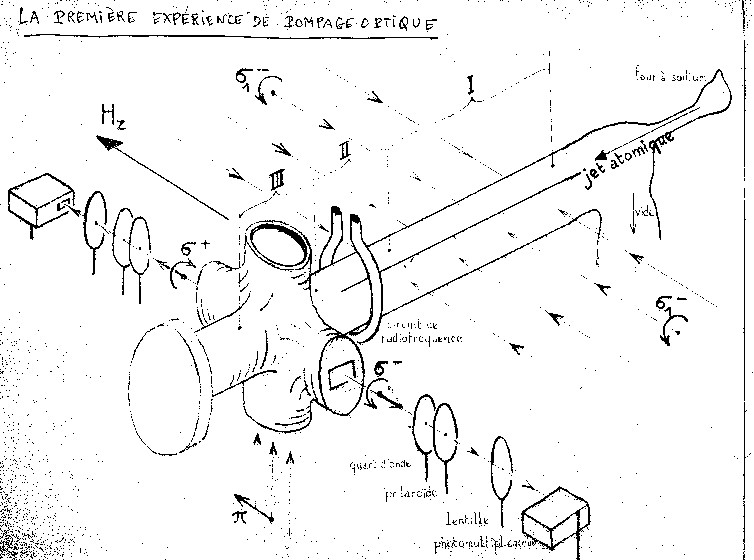The atmosphere of the 1950s

In its early years, the group operated under material conditions marked by the aftermath of the war and occupation, followed by a period of reconstruction when state funds were primarily allocated to rebuilding efforts. Apart from a few frequency generators of American origin, the lab team relied on sturdy, pre-war-style measuring instruments with distinctive brass casings, as well as glass diffusion pumps that remained a fixture on Brossel’s vacuum and experimental cell-filling bench for many years.
In the 1950s, simple materials like black paint and cardboard were essential for optical setups, and wall-mounted moving-coil galvanometers were used to measure the faint currents of photoelectric detectors. Gradually, modern electronics techniques, already in use by the solid-state physics group led by Pierre Aigrain, began to spread to Kastler’s group, bringing in X-Y recorders, oscilloscopes, and even synchronous detection systems.
Though modest, these conditions were a powerful motivator for doctoral students of the time, who were deeply aware of contributing to the revival of French physics in the wake of the war. Their collective work, sustained by this generation and those that followed, paid off: comparing the situation in the 1950s to that of today reveals significant progress. The Nobel Prizes awarded to three French researchers in the 1990s reflect the international stature achieved by French research teams.
Within the Kastler group, the atmosphere was warm and marked by solidarity, thanks to the complementary skills and mutual support of the two leaders, who worked without competition. Kastler brought a principle-driven perspective, along with curiosity and imagination, while Brossel, pragmatic and perceptive, focused on the concrete and technical aspects. He guided doctoral students in quantum calculations and, with his intuition in physics, helped them interpret experimental results. Kastler, for his part, kept in regular contact with researchers, checking on their progress in the often unpredictable search for a signal.
